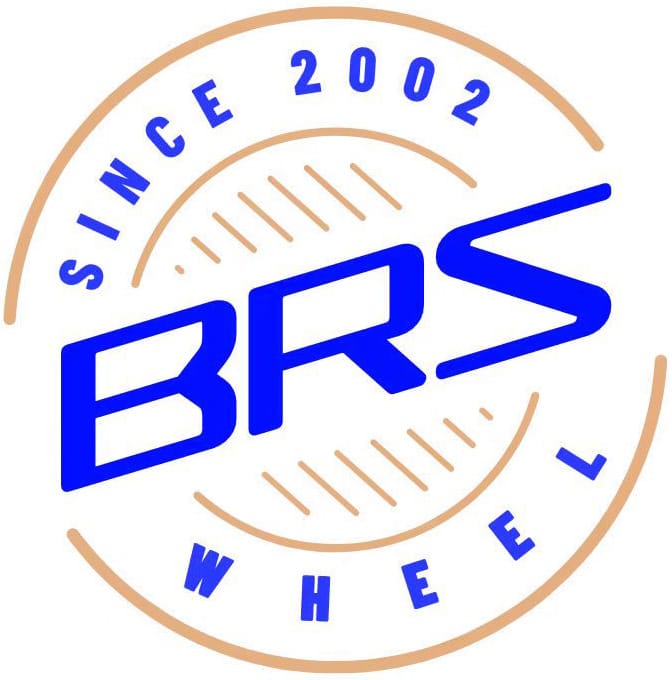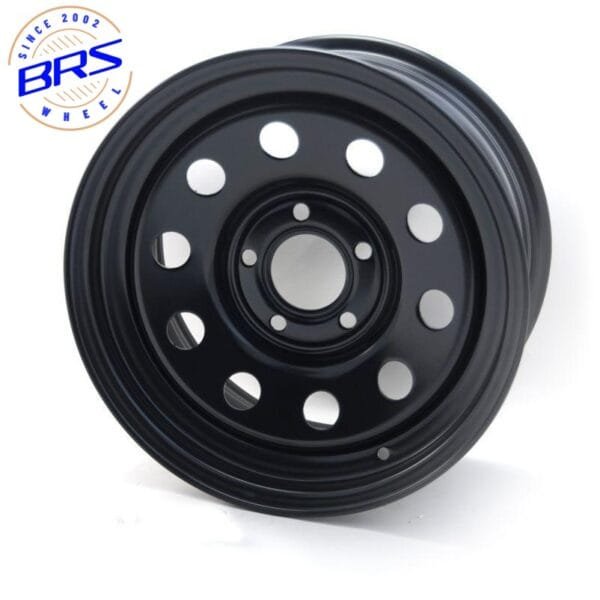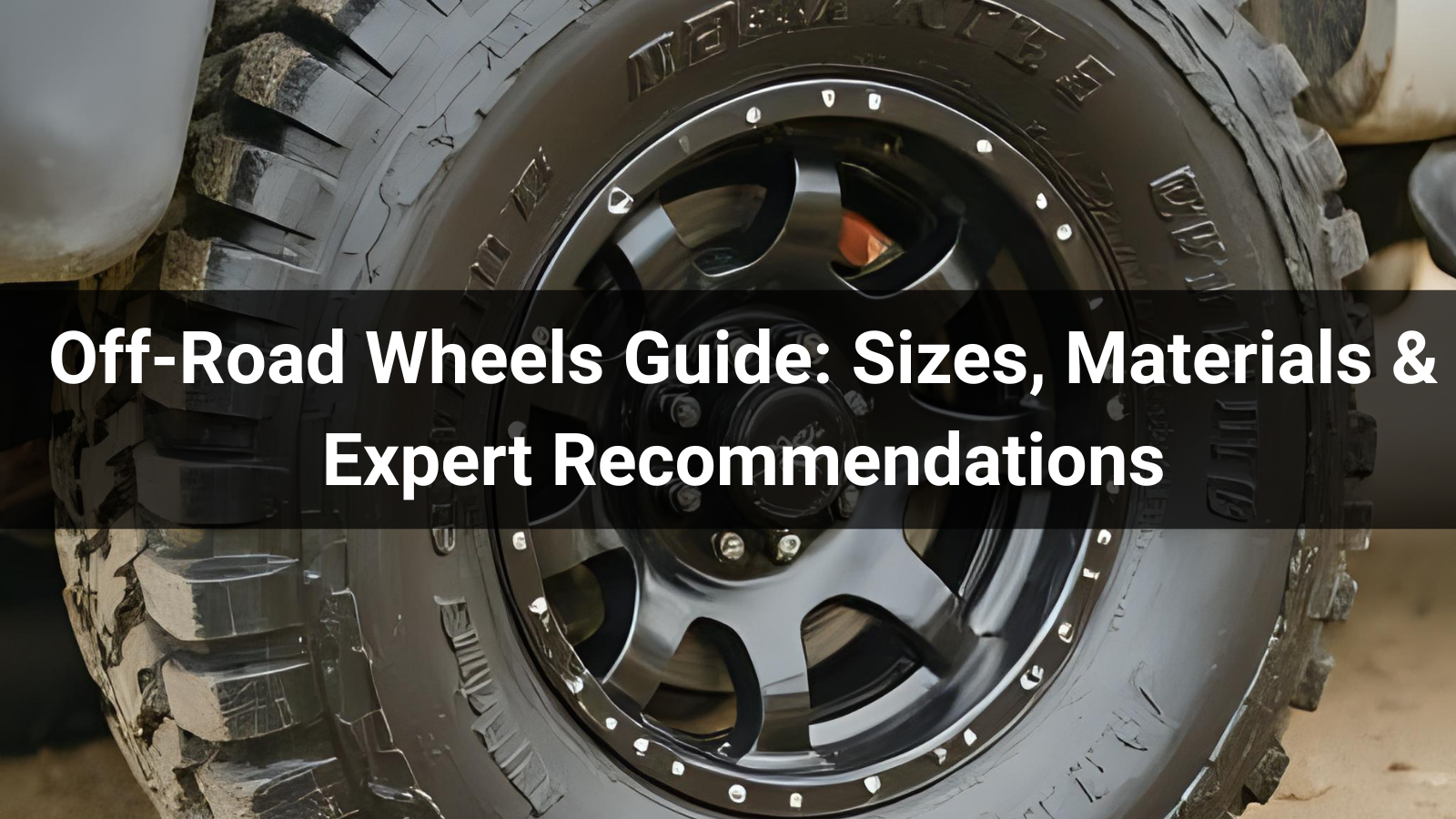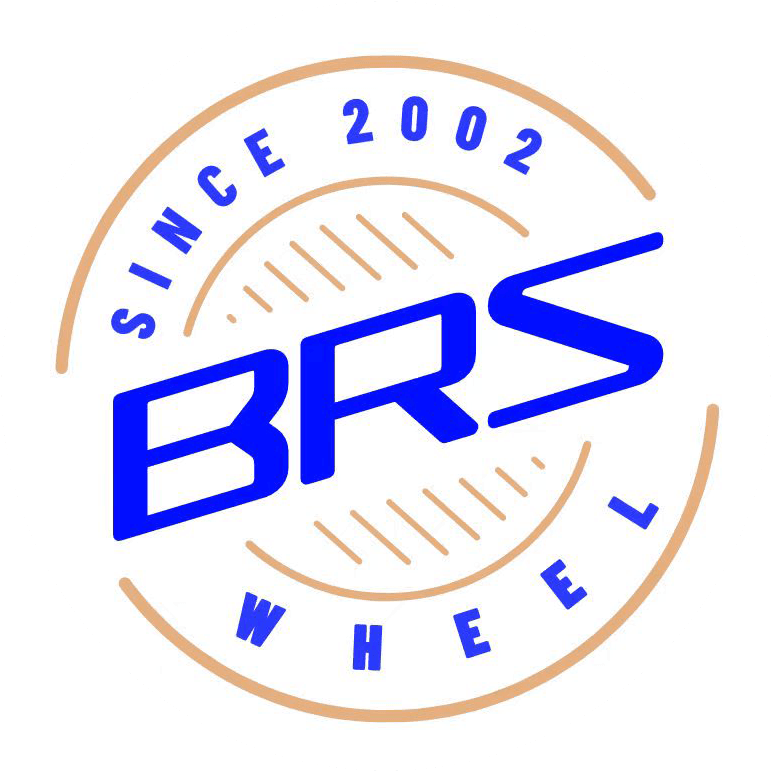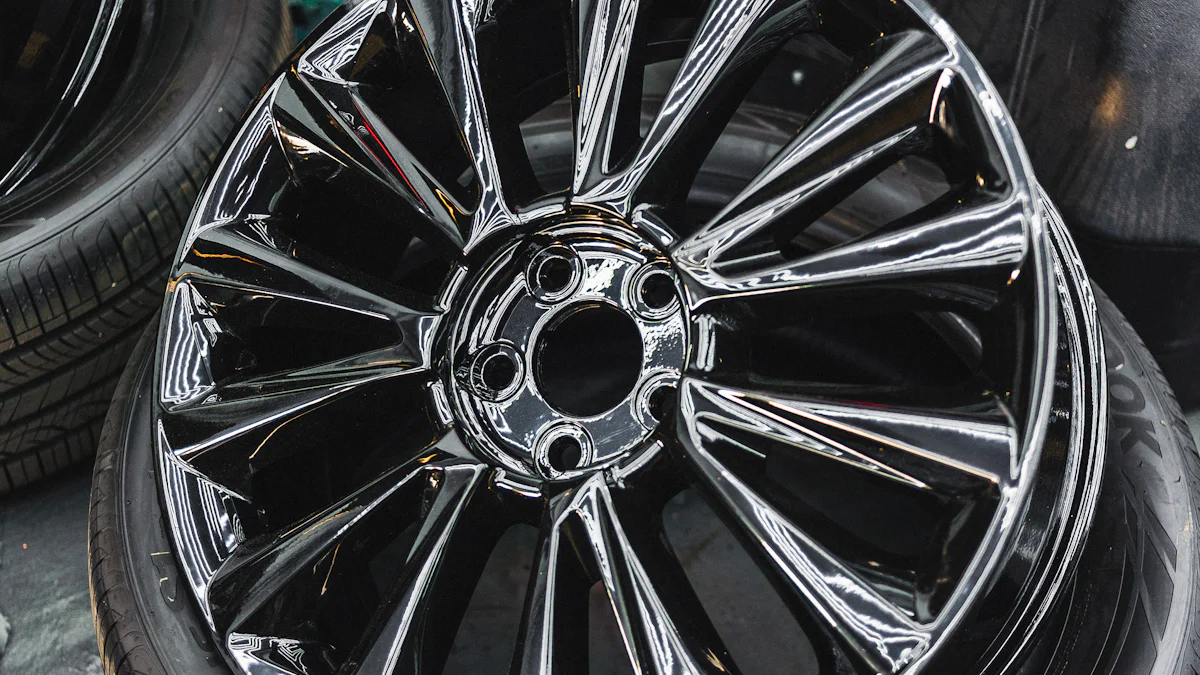
Choosing the right 16×6 wheel plays a crucial role in enhancing your vehicle’s performance, safety, and appearance. The “16×6” specification refers to a wheel with a 16-inch diameter and a 6-inch width, dimensions that directly impact handling and stability. A proper fit ensures compatibility with your vehicle’s bolt pattern and load requirements, preventing issues like poor alignment or unsafe weight distribution. Additionally, selecting a wheel that matches your vehicle’s design can elevate its overall aesthetic appeal. By understanding these factors, you can make an informed decision that benefits both functionality and style.
Key Takeaways
- Understand the ’16×6′ specification: This indicates a wheel with a 16-inch diameter and a 6-inch width, crucial for ensuring proper tire fit and vehicle compatibility.
- Check your vehicle’s manual: Always refer to your owner’s manual for accurate wheel specifications, including diameter, width, offset, and bolt pattern.
- Prioritize load ratings: Ensure the wheel’s load rating meets or exceeds your vehicle’s requirements to maintain safety and performance.
- Consider material types: Choose between steel wheels for durability and cost-effectiveness or alloy wheels for lighter weight and improved performance.
- Verify bolt pattern compatibility: Ensure the wheel’s bolt pattern matches your vehicle to avoid installation issues and safety risks.
- Evaluate performance and aesthetics: Balance your choice between functionality and style by considering wheel design, finish, and how they complement your vehicle.
- Consult professionals if unsure: When in doubt, seek advice from auto specialists to avoid common pitfalls in wheel selection.
Understanding 16×6 Wheel Specifications
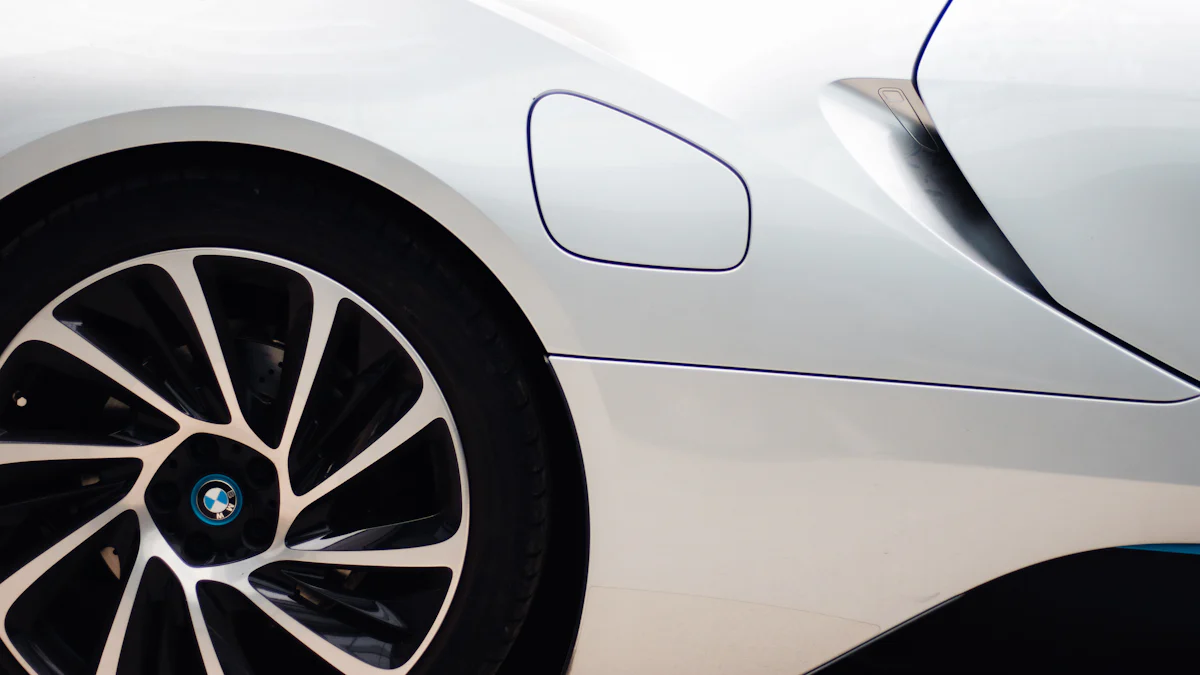
Wheel Diameter and Width
What does “16×6” mean in wheel terminology?
The term “16×6” refers to the dimensions of a wheel. The first number, 16, represents the wheel’s diameter in inches. This is the distance across the wheel from one edge to the other, passing through the center. The second number, 6, indicates the wheel’s width in inches, measured from the inner edge of one side to the inner edge of the opposite side. These measurements are critical because they determine the size of tires that can fit the wheel and ensure proper alignment with your vehicle’s specifications.
For example, a 16×6 wheel is designed to accommodate tires with widths typically ranging from 175 to 205 millimeters. This range ensures a snug fit, which is essential for maintaining stability and performance. Always verify these dimensions to avoid mismatched tires that could compromise safety or handling.
Why are diameter and width critical for performance?
The diameter and width of a wheel directly affect your vehicle’s performance. A larger diameter can improve cornering stability and braking efficiency, while a smaller diameter may enhance acceleration. The width influences how the tire contacts the road. A wider wheel provides better grip and stability, especially during sharp turns or on uneven surfaces.
However, choosing the wrong size can lead to issues. For instance, a wheel that is too wide may cause the tire to rub against the vehicle’s suspension or body. On the other hand, a wheel that is too narrow might not provide adequate support for the tire, leading to poor handling. Ensuring the correct diameter and width is vital for achieving optimal performance and safety.
Offset and Backspacing
How does offset influence fitment and handling?
Offset refers to the distance between the wheel’s mounting surface and its centerline. It plays a significant role in determining how the wheel sits in relation to the vehicle’s suspension and fenders. A positive offset means the mounting surface is closer to the front of the wheel, pushing the wheel inward. A negative offset moves the wheel outward, away from the vehicle.
The offset affects handling and fitment. A wheel with the wrong offset can alter the vehicle’s track width, which may impact stability and steering response. For example, a 16×6 wheel with a zero offset ensures a balanced fit, keeping the wheel centered in the wheel well. Always check your vehicle’s recommended offset to maintain proper alignment and avoid unnecessary wear on suspension components.
The role of backspacing in wheel placement
Backspacing measures the distance from the wheel’s mounting surface to the back edge of the wheel. It determines how far the wheel extends into the wheel well. Proper backspacing ensures that the wheel clears the suspension, brakes, and other components.
For a 16×6 wheel, backspacing must align with your vehicle’s design to prevent interference. Insufficient backspacing can cause the wheel to stick out too far, while excessive backspacing may lead to rubbing against internal parts. Accurate backspacing contributes to a smooth ride and prevents damage to your vehicle.
Bolt Pattern
How to measure and match your vehicle’s bolt pattern
The bolt pattern refers to the arrangement of bolt holes on the wheel. It is expressed as the number of bolts and the diameter of the circle they form. For instance, an 8-lug bolt pattern with a 6.5-inch center means the wheel has eight bolt holes arranged in a circle with a 6.5-inch diameter.
To measure your vehicle’s bolt pattern, count the number of lug holes and measure the distance between them. Matching the bolt pattern is crucial for proper fitment. A mismatch can prevent the wheel from being securely mounted, posing a safety risk. Many 16×6 wheels feature common bolt patterns, making them compatible with a wide range of vehicles.
Why bolt pattern compatibility is essential
Bolt pattern compatibility ensures that the wheel can be securely attached to your vehicle. An incompatible bolt pattern may result in loose or improperly seated wheels, leading to vibrations or even detachment while driving. Always verify the bolt pattern before purchasing a 16×6 wheel to guarantee a safe and reliable fit.
Load Rating
What is a load rating, and how does it impact safety?
The load rating of a wheel indicates the maximum weight it can safely support. This specification ensures that the wheel can handle the combined weight of your vehicle and its cargo without compromising safety or performance. For example, a 16×6 wheel may have a maximum load capacity of 3,750 pounds, which is sufficient for many vehicles, including trailers and light trucks.
Using a wheel with an inadequate load rating can lead to serious risks. Overloading the wheel may cause structural failure, resulting in accidents or damage to your vehicle. Additionally, it can accelerate wear and tear on the wheel, reducing its lifespan. Always prioritize the load rating when selecting a wheel to ensure it meets your vehicle’s requirements and provides a safe driving experience.
How to determine the correct load rating for your vehicle
To find the appropriate load rating for your vehicle, start by checking the specifications in your owner’s manual or the sticker plate located inside the driver’s side door. These sources provide essential details about the weight your wheels must support. If you cannot locate this information, consult a professional or refer to the manufacturer’s guidelines.
When choosing a 16×6 wheel, ensure its load rating matches or exceeds your vehicle’s requirements. For instance, if your vehicle’s gross axle weight rating (GAWR) is 7,000 pounds, each wheel should support at least 3,500 pounds. This ensures the wheels can handle the load evenly and safely.
Additionally, consider the type of driving you do. If you frequently carry heavy loads or tow trailers, opt for wheels with higher load ratings to accommodate the extra weight. By selecting the correct load rating, you enhance your vehicle’s safety, performance, and durability.
How to Determine Compatibility for a 16×6 Wheel
Check Your Vehicle’s Manual
Locating wheel specifications in the manual.
Your vehicle’s manual is the most reliable source for finding accurate wheel specifications. It provides essential details like the recommended wheel diameter, width, offset, and bolt pattern. These specifications ensure that the wheels you choose fit your vehicle perfectly. To locate this information, check the section dedicated to tires and wheels. Manuals often include a chart or table listing the compatible wheel sizes for your specific model.
If you cannot find the manual, look for a sticker plate inside the driver’s side door. This plate typically displays key details, including the wheel size and load rating. Using this information as a reference helps you avoid purchasing incompatible wheels.
Why the manual is the most reliable source for compatibility.
The manual is created by the vehicle manufacturer, making it the most trustworthy guide for compatibility. It accounts for your vehicle’s design, weight distribution, and suspension system. Relying on the manual reduces the risk of errors when selecting a 16×6 wheel. While online tools and professional advice are helpful, the manual ensures you have the most precise and vehicle-specific data.
Measure Your Current Wheels
Steps to measure diameter, width, and offset accurately.
Measuring your current wheels helps confirm their dimensions and ensures compatibility with new ones. Follow these steps to measure accurately:
- Diameter: Measure across the wheel from one edge to the other, passing through the center. Exclude the tire in this measurement.
- Width: Measure from the inner edge of one side to the inner edge of the opposite side. Ensure the wheel is removed from the vehicle for accuracy.
- Offset: Locate the mounting surface of the wheel. Measure the distance between this surface and the wheel’s centerline. Use a straightedge and ruler for precision.
Take your time during each step to avoid mistakes. Accurate measurements ensure the new wheels align with your vehicle’s specifications.
Tips for avoiding measurement errors.
To minimize errors, use proper tools like a tape measure, caliper, or ruler. Work in a well-lit area to see the markings clearly. Double-check each measurement to confirm accuracy. If you are unsure about any step, consult a professional or refer to online guides with visual instructions. Avoid estimating measurements, as even small inaccuracies can lead to compatibility issues.
Verify Load Ratings and Weight Limits
Matching the wheel’s load rating to your vehicle’s requirements.
The load rating indicates the maximum weight a wheel can safely support. To match the load rating, check your vehicle’s gross axle weight rating (GAWR). Divide the GAWR by the number of wheels on the axle to determine the minimum load rating required for each wheel. For example, if the GAWR is 7,000 pounds, each wheel must support at least 3,500 pounds.
Selecting a 16×6 wheel with the correct load rating ensures your vehicle can handle its weight and cargo safely. This is especially important for vehicles that tow trailers or carry heavy loads. Always choose wheels with a load rating equal to or higher than your vehicle’s requirements.
Risks of using wheels with incorrect load ratings.
Using wheels with insufficient load ratings poses serious safety risks. Overloaded wheels may fail under pressure, leading to accidents or damage to your vehicle. They also wear out faster, reducing their lifespan and increasing maintenance costs. Additionally, incorrect load ratings can affect handling and braking performance, compromising your driving experience. Prioritize load ratings to ensure safety and reliability.
Performance and Aesthetic Considerations for 16×6 Wheels
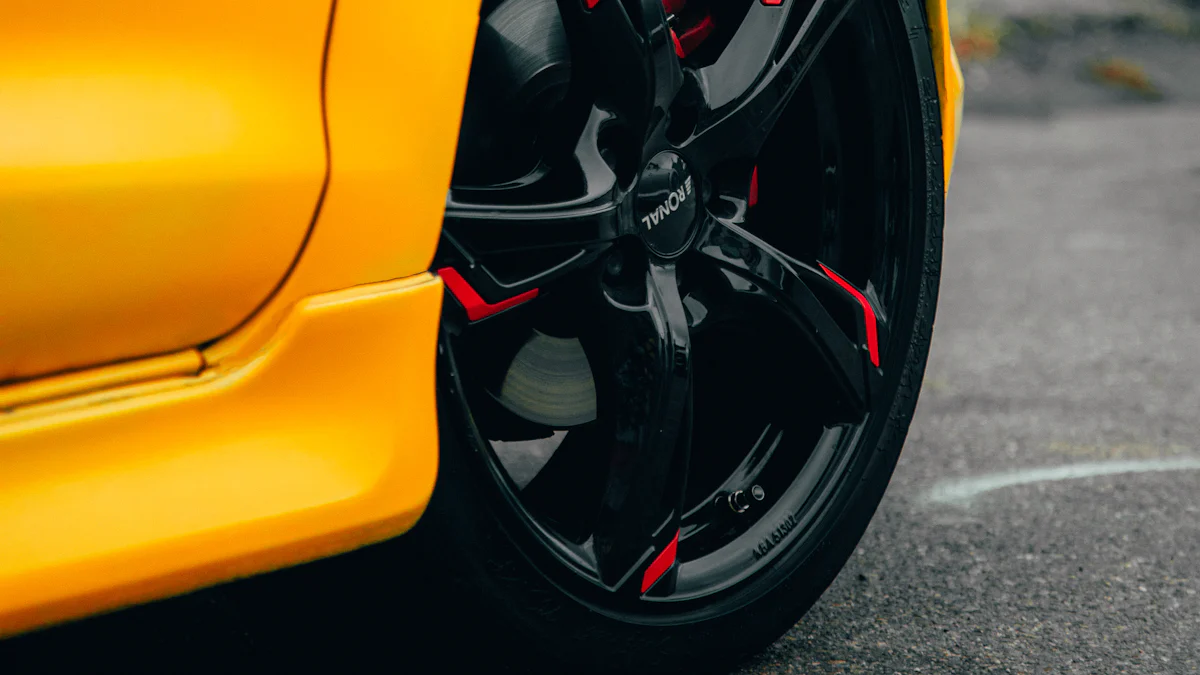
Material Types
Comparing steel and alloy wheels: Pros and cons.
When selecting a wheel, the material plays a significant role in performance and durability. Steel and alloy are the two most common materials for a 16×6 wheel, each offering distinct advantages and disadvantages.
Steel Wheels: These are known for their strength and affordability. Steel wheels are highly durable, making them ideal for heavy-duty applications or harsh conditions. They resist damage from impacts, which is why they are often used in off-road or winter driving scenarios. However, steel wheels are heavier, which can reduce fuel efficiency and slightly impact acceleration.
Alloy Wheels: These are lighter and more stylish compared to steel wheels. The reduced weight improves handling, braking, and acceleration. Alloy wheels also dissipate heat better, which enhances brake performance during high-speed driving. On the downside, they are more expensive and less resistant to damage from impacts.
Choosing between steel and alloy depends on your priorities. If you value durability and cost-effectiveness, steel wheels are a solid choice. If performance and aesthetics matter more, alloy wheels are worth considering.
How material choice affects durability and performance.
The material of your wheel directly influences its lifespan and how your vehicle performs. Steel wheels excel in durability, withstanding rough terrains and heavy loads without bending or cracking. This makes them suitable for trucks, trailers, or vehicles used in challenging environments. However, their weight can slightly hinder performance.
Alloy wheels, being lighter, enhance your vehicle’s agility and responsiveness. The reduced unsprung weight improves suspension performance, leading to a smoother ride. Additionally, their ability to dissipate heat reduces the risk of brake fade during intense driving. While alloy wheels are less durable than steel, their performance benefits make them a popular choice for everyday and performance vehicles.
Finishes and Colors
Popular finishes for 16×6 wheels and their benefits.
The finish of a wheel not only affects its appearance but also its resistance to wear and tear. Popular finishes for 16×6 wheels include:
- Painted Finish: Offers a wide range of color options and provides a protective layer against corrosion. It is a versatile choice for those looking to match their wheels with their vehicle’s color scheme.
- Polished Finish: Gives a shiny, reflective surface that enhances the wheel’s aesthetic appeal. This finish is ideal for those who want their vehicle to stand out.
- Powder-Coated Finish: Known for its durability, this finish resists chipping, scratching, and fading. It is perfect for wheels exposed to harsh weather conditions.
- Chrome Finish: Provides a mirror-like shine that adds a luxurious touch to your vehicle. However, it requires regular maintenance to prevent tarnishing.
Each finish has its unique benefits, so consider your vehicle’s style and the conditions it will face when choosing a finish.
Choosing a finish that complements your vehicle’s design.
The right finish can elevate your vehicle’s overall look. For a sleek and modern appearance, opt for polished or chrome finishes. These add a touch of sophistication and work well with darker-colored vehicles. If you prefer a bold and sporty vibe, painted finishes in vibrant colors like red or black can make a statement.
For vehicles frequently exposed to rough conditions, powder-coated finishes provide both style and durability. They maintain their appearance even after prolonged exposure to dirt, moisture, or road salt. Matching the wheel finish to your vehicle’s design ensures a cohesive and appealing look.
Impact on Handling and Ride Quality
How wheel weight influences acceleration and braking.
The weight of a wheel significantly affects your vehicle’s performance. Heavier wheels, like steel ones, can slow down acceleration and increase braking distances. This happens because the engine and brakes need to work harder to move and stop the additional weight. While this may not be noticeable during regular driving, it can impact performance during high-speed or emergency situations.
Lighter wheels, such as those made from alloy, improve acceleration and braking. The reduced weight decreases the strain on your engine and brakes, resulting in quicker response times. This makes alloy wheels a preferred choice for drivers who prioritize performance.
The effect of wheel design on handling and comfort.
The design of a wheel influences how your vehicle handles and how comfortable the ride feels. Wider wheels provide better stability and grip, especially during cornering. However, they may slightly reduce ride comfort due to increased road contact. Narrower wheels offer a smoother ride but may compromise stability at higher speeds.
The spoke design also plays a role. Wheels with fewer spokes are lighter, enhancing handling and responsiveness. Wheels with more spokes distribute weight evenly, improving durability and comfort. When choosing a 16×6 wheel, consider how its design aligns with your driving needs and preferences.
Step-by-Step Guide to Choosing the Right 16×6 Wheel
Step 1: Identify Your Vehicle’s Requirements
Gather specifications from the manual and current wheels.
Start by collecting all the necessary details about your vehicle’s wheel requirements. Your owner’s manual is the most reliable source for this information. It provides key specifications such as wheel diameter, width, offset, bolt pattern, and load rating. These details ensure that the new wheel fits perfectly and performs optimally.
If you cannot access the manual, check the sticker plate inside the driver’s side door. This plate often lists the recommended wheel size and other essential specifications. Additionally, inspect your current wheels. Look for markings on the wheel’s inner surface or rim, which usually indicate its size and other specifications. Write down these details to use as a reference when shopping for a new 16×6 wheel.
Step 2: Research Compatible Options
Use online tools or consult professionals for recommendations.
Once you have the specifications, begin researching wheels that match your vehicle’s requirements. Online tools, such as wheel compatibility calculators, can simplify this process. These tools allow you to input your vehicle’s make, model, and year to generate a list of compatible wheels. They also provide insights into how different wheels may affect your vehicle’s performance.
Consulting with professionals is another effective approach. Visit a trusted auto shop or contact a wheel specialist. They can recommend options based on your driving habits, vehicle type, and personal preferences. Professionals also help you avoid common pitfalls, such as selecting wheels with incorrect offsets or load ratings.
When researching, pay attention to the material of the wheels. Steel wheels are durable and cost-effective, making them ideal for heavy-duty use or winter driving. Alloy wheels, on the other hand, are lighter and more stylish, enhancing performance and aesthetics. Choose a material that aligns with your needs and priorities.
Step 3: Evaluate Performance and Aesthetic Preferences
Consider material, finish, and design for your needs.
Selecting the right wheel involves balancing performance and style. Start by evaluating the material. Steel wheels offer exceptional durability and reliability. They perform well in harsh conditions and provide a confident ride. Alloy wheels, while less durable, are lighter and improve handling, braking, and acceleration. If you prioritize aesthetics, alloy wheels are often the better choice due to their sleek designs.
Next, consider the finish of the wheel. Popular finishes include painted, polished, powder-coated, and chrome. Painted finishes offer versatility and protection against corrosion. Polished and chrome finishes add a shiny, luxurious look but require regular maintenance. Powder-coated finishes are highly durable, making them suitable for rough conditions.
Finally, think about the wheel’s design. The number of spokes, their arrangement, and the overall style can impact both appearance and performance. Wheels with fewer spokes are lighter, improving handling. Wheels with more spokes distribute weight evenly, enhancing durability. Choose a design that complements your vehicle’s look while meeting your performance needs.
Step 4: Verify Load Ratings and Safety Standards
Ensure the wheel meets your vehicle’s safety requirements.
You must confirm that the wheel you choose adheres to your vehicle’s load rating and safety standards. The load rating indicates the maximum weight a wheel can support without compromising its structural integrity. This ensures your vehicle operates safely under normal driving conditions and when carrying cargo.
To verify the load rating, check your vehicle’s gross axle weight rating (GAWR). Divide this number by the total number of wheels on the axle. For example, if the GAWR is 6,800 pounds and your vehicle has two wheels per axle, each wheel must support at least 3,400 pounds. Always select a wheel with a load rating equal to or greater than this requirement.
Ignoring load ratings can lead to severe consequences. Overloaded wheels may crack or fail, causing accidents or damage to your vehicle. Additionally, incorrect load ratings can affect handling, braking, and overall performance. Prioritize safety by ensuring the wheel meets or exceeds your vehicle’s specifications.
When evaluating safety standards, look for certifications like IATF 16949, which guarantees adherence to high-quality manufacturing processes. Wheels with such certifications undergo rigorous testing to ensure durability and reliability. Choosing certified wheels provides peace of mind and enhances your driving experience.
Step 5: Make Your Purchase
Tips for buying from trusted retailers or manufacturers.
Purchasing wheels from reputable sources ensures quality and reliability. Trusted retailers and manufacturers provide products that meet industry standards and offer warranties for added assurance. Follow these tips to make an informed purchase:
Research the Manufacturer: Choose brands with a proven track record of producing high-quality wheels. For instance, companies like Ningbo BRS Auto Parts Co., Ltd specialize in steel wheels and maintain strict quality control measures, including IATF 16949 certification.
Check Customer Reviews: Read reviews from other buyers to gauge the product’s performance and durability. Positive feedback often indicates a reliable product and trustworthy seller.
Verify Product Specifications: Ensure the wheel matches your vehicle’s requirements, including diameter, width, offset, bolt pattern, and load rating. Double-check these details before finalizing your purchase.
Inspect Return Policies: Opt for retailers with flexible return or exchange policies. This allows you to address any compatibility issues without financial loss.
Avoid Counterfeit Products: Be cautious of deals that seem too good to be true. Counterfeit wheels may lack the necessary safety standards and compromise your vehicle’s performance.
By following these steps, you can confidently purchase a 16×6 wheel that meets your needs. Trusted manufacturers and retailers prioritize customer satisfaction and provide products designed for safety, performance, and longevity.
FAQs
1. What does “16×6” mean when selecting wheels?
The term “16×6” specifies the wheel’s dimensions. The “16” refers to the diameter of the wheel in inches, while the “6” indicates the width of the wheel in inches. These measurements are crucial because they determine the size of tires that will fit the wheel and ensure compatibility with your vehicle’s specifications. Always confirm these dimensions to avoid mismatched tires or improper fitment.
2. How do I know if a 16×6 wheel is compatible with my vehicle?
To determine compatibility, start by checking your vehicle’s manual or the sticker plate inside the driver’s side door. These sources provide essential details like the recommended wheel diameter, width, offset, bolt pattern, and load rating. You can also measure your current wheels to confirm their dimensions. If you’re unsure, consult a professional or use online tools designed to match wheels to specific vehicle models.
3. Why is the bolt pattern important when choosing a wheel?
The bolt pattern ensures the wheel can be securely mounted to your vehicle. It describes the number of bolt holes and the diameter of the circle they form. For example, a bolt pattern of 5×114.3 means the wheel has five bolt holes arranged in a circle with a 114.3 mm diameter. A mismatch in the bolt pattern can prevent proper installation, leading to safety risks. Always verify the bolt pattern before purchasing a wheel.
4. What happens if I choose a wheel with the wrong offset?
An incorrect offset can affect your vehicle’s handling, stability, and suspension. A positive offset pushes the wheel inward, while a negative offset moves it outward. If the offset is too high or too low, the wheel may rub against the suspension or fenders, causing damage. It can also alter the vehicle’s track width, impacting steering and alignment. Always select a wheel with an offset that matches your vehicle’s specifications.
5. How do I measure the offset of a wheel?
To measure the offset, locate the wheel’s mounting surface and its centerline. Use a straightedge to find the centerline by measuring the total width of the wheel and dividing it by two. Then, measure the distance from the mounting surface to the centerline. A positive offset means the mounting surface is closer to the front of the wheel, while a negative offset indicates it is closer to the back. Accurate measurements ensure proper fitment.
6. What is the significance of load rating in wheels?
The load rating indicates the maximum weight a wheel can safely support. This includes the weight of your vehicle and any cargo. Using a wheel with an inadequate load rating can lead to structural failure, accidents, or damage to your vehicle. To find the correct load rating, check your vehicle’s gross axle weight rating (GAWR) and divide it by the number of wheels on the axle. Always choose a wheel with a load rating equal to or higher than this requirement.
7. Should I choose steel or alloy wheels for my 16×6 size?
The choice between steel and alloy wheels depends on your priorities. Steel wheels are durable, affordable, and ideal for heavy-duty use or harsh conditions. They resist damage from impacts but are heavier, which can slightly reduce fuel efficiency. Alloy wheels are lighter and enhance performance, handling, and braking. They also offer more stylish designs but are less resistant to impacts and more expensive. Consider your driving needs and budget when making a decision.
8. How do I maintain the finish of my wheels?
Proper maintenance keeps your wheels looking great and extends their lifespan. For painted or powder-coated finishes, clean them regularly with mild soap and water to remove dirt and debris. Avoid abrasive cleaners that can damage the surface. For polished or chrome finishes, use specialized cleaning products to maintain their shine and prevent tarnishing. Regularly inspect your wheels for scratches or chips and address them promptly to prevent corrosion.
9. Can I install 16×6 wheels myself, or should I seek professional help?
While you can install wheels yourself if you have the necessary tools and experience, seeking professional help is often safer and more reliable. Professionals ensure the wheels are mounted correctly, balanced, and aligned with your vehicle’s specifications. Improper installation can lead to vibrations, uneven tire wear, or safety issues. If you’re unsure about the process, it’s best to consult a trusted auto shop.
10. Where can I buy high-quality 16×6 wheels?
You can purchase high-quality 16×6 wheels from reputable manufacturers or retailers. Look for companies with a proven track record, such as Ningbo BRS Auto Parts Co., Ltd, which specializes in steel wheels and adheres to strict quality standards like IATF 16949 certification. Check customer reviews, verify product specifications, and ensure the retailer offers warranties and flexible return policies. Avoid counterfeit products by buying from trusted sources.
Choosing the best 16×6 wheel for your vehicle requires a clear understanding of specifications, compatibility, and performance needs. By following the outlined steps, you can confidently select a wheel that enhances both safety and style. Always prioritize proper fitment to avoid issues like rubbing or poor alignment, as highlighted by experts who caution against mismatched sizes. If you’re uncertain, consult a professional or explore trusted manufacturers like Ningbo BRS Auto Parts Co., Ltd for reliable options. A well-chosen wheel not only improves functionality but also elevates your vehicle’s overall appearance.
FAQ
What tire sizes work best with a 16×6 wheel?
For a 16×6 wheel, tire sizes between 175 and 205 millimeters in width typically fit well. However, some users have successfully paired 255/85R16 tires with 16×6 wheels, though this pushes the limits of compatibility. If you prefer a snug fit that ensures stability and performance, stick to the recommended range. Always verify the tire size with your vehicle’s specifications to avoid handling or safety issues.
Can I use 16×7 wheels instead of 16×6 wheels?
Yes, you can use 16×7 wheels as long as they meet your vehicle’s offset and bolt pattern requirements. For instance, a 225/50/16 tire works well on 16×7 wheels with an offset in the 42-45mm range. This setup provides a balanced fit and enhances performance. Ensure the wider wheel does not interfere with your vehicle’s suspension or fenders.
What happens if the backspacing is incorrect?
Incorrect backspacing can cause significant problems. Too much backspacing pulls the wheel inward, potentially leading to rubbing against suspension components. For example, older Tundra or Tacoma rims with excessive backspacing may not fit properly on certain vehicles like the Land Cruiser 80 series. On the other hand, insufficient backspacing pushes the wheel outward, which can affect handling and stability. Always match the backspacing to your vehicle’s design for optimal performance.
Are spacers a good solution for fitment issues?
Spacers can help resolve fitment issues caused by incorrect backspacing or offset. They create additional space between the wheel and the hub, allowing for better alignment. However, spacers require careful installation and may add complexity to your setup. If you prefer a straightforward solution, choose wheels with the correct specifications instead of relying on spacers.
Can I use 285/75R16 tires on a 16×6 wheel?
While 285/75R16 tires can technically fit on a 16×6 wheel, they may not provide the best performance. A 6-inch wide wheel is on the narrow side for such a wide tire, which could affect handling and stability. A better option might be 255/85R16 tires, as they offer a more balanced fit for a 16×6 wheel. Always consider the manufacturer’s recommendations to ensure safety and performance.
How do I measure the bolt pattern on my wheels?
To measure the bolt pattern, count the number of lug holes and measure the diameter of the circle they form. For example, a 5×114.3 bolt pattern means the wheel has five lug holes arranged in a circle with a 114.3 mm diameter. Use a ruler or caliper for accuracy. Matching the bolt pattern ensures the wheel mounts securely to your vehicle.
Is it safe to use aftermarket wheels on my vehicle?
Aftermarket wheels are safe as long as they meet your vehicle’s specifications. Check the diameter, width, offset, bolt pattern, and load rating before purchasing. Many aftermarket wheels, including 16×6 options, offer excellent performance and style. Consult a professional or use online tools to confirm compatibility with your vehicle.
What are the risks of using tires that are too wide for the wheel?
Using tires that are too wide for the wheel can lead to several issues. The tire may not seat properly, increasing the risk of air leaks or blowouts. Handling and stability may also suffer, especially during sharp turns or at high speeds. For example, running 285s on a 16×6 wheel stretches the tire beyond its optimal fit, which could compromise safety. Stick to recommended tire sizes for the best results.
How do I maintain the finish on my wheels?
Regular cleaning helps maintain your wheels’ finish. Use mild soap and water to remove dirt and debris. Avoid abrasive cleaners that can damage the surface. For polished or chrome finishes, apply specialized products to preserve their shine. Inspect your wheels frequently for scratches or chips, and address them promptly to prevent corrosion.
Where can I find high-quality 16×6 wheels?
You can find high-quality 16×6 wheels from reputable manufacturers like Ningbo BRS Auto Parts Co., Ltd. Look for wheels that meet industry standards, such as IATF 16949 certification. Trusted retailers often provide warranties and detailed product specifications. Avoid counterfeit products by purchasing from verified sources.
Related News
- Posted In:General
